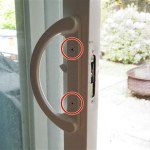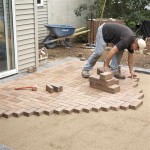Fire Sense Patio Heater Natural Gas Conversion: A Comprehensive Guide
The popularity of outdoor living spaces has surged in recent years, leading to increased demand for effective and efficient heating solutions. Fire Sense patio heaters, known for their portability and ease of use with propane, are a common choice. However, the operational cost and environmental impact of propane can be concerns. Converting a Fire Sense patio heater to natural gas offers a potential solution, providing a more economical and potentially cleaner burning fuel source. This article provides a detailed exploration of the process, considerations, and requirements for converting a Fire Sense patio heater to natural gas.
It is crucial to acknowledge that converting a propane-fueled appliance to natural gas is not a straightforward task and should only be undertaken by qualified professionals. Modifications performed incorrectly can lead to serious safety hazards, including gas leaks, explosions, and carbon monoxide poisoning. This article serves as an informative guide, highlighting the key aspects of the conversion process, but it does not provide instructions for performing the conversion. It is imperative to consult with and hire a licensed gas technician for any actual conversion work.
Understanding the Differences Between Propane and Natural Gas
The fundamental disparity between propane and natural gas lies in their chemical composition and energy content. Propane, a liquefied petroleum gas (LPG), is a heavier, more energy-dense fuel compared to natural gas, which is primarily composed of methane. This difference in energy density directly impacts the design and operation of combustion appliances like patio heaters. A propane-fueled appliance requires smaller orifices and a higher pressure regulator to deliver the appropriate amount of fuel for combustion. Natural gas, being less energy-dense, requires larger orifices and a lower pressure regulator for optimal performance.
When converting a Fire Sense propane patio heater to natural gas, these differences must be compensated for. The existing propane orifice needs to be replaced with a larger natural gas orifice to allow for sufficient fuel flow. Furthermore, the pressure regulator needs to be adjusted or replaced to match the lower pressure of the natural gas supply. Ignoring these differences will result in inefficient combustion, reduced heat output, and potentially hazardous conditions.
Another critical distinction is the supply pressure. Propane is typically supplied at a higher pressure in portable tanks, while natural gas is delivered at a lower, regulated pressure through pipelines. The manifold pressure, the pressure at which the gas is delivered to the burner, is significantly different for propane and natural gas. A professional conversion will involve adjusting the regulator to ensure the correct manifold pressure for natural gas operation.
Key Considerations Before Conversion
Before embarking on a Fire Sense patio heater conversion, several factors must be carefully evaluated. These considerations will help determine the feasibility and cost-effectiveness of the project.
Firstly, the availability of a natural gas supply line is paramount. A natural gas line must be readily accessible near the intended location of the patio heater. Tapping into an existing gas line requires careful planning and adherence to local gas codes. The existing gas line must be adequately sized to handle the additional load of the patio heater, without compromising the performance of other appliances in the household. This assessment should be performed by a qualified gas technician.
Secondly, the cost of conversion should be considered. Converting a propane patio heater to natural gas involves the cost of parts, such as the natural gas orifice and potentially a new regulator, as well as the labor cost of a qualified gas technician. Obtaining quotes from multiple technicians is advisable to ensure a competitive price. Additionally, the long-term savings in fuel costs associated with natural gas should be weighed against the initial conversion expense. Natural gas is often less expensive than propane, especially in regions with readily available natural gas infrastructure.
Thirdly, warranty implications should be thoroughly investigated. Modifying a Fire Sense patio heater by converting it to natural gas may void the manufacturer's warranty. It is important to contact Fire Sense directly to determine the impact of the conversion on the warranty coverage. If the warranty is a significant concern, it may be prudent to consider purchasing a patio heater specifically designed for natural gas operation.
Fourthly, local building codes and regulations must be adhered to. Gas installations are subject to strict regulations designed to ensure safety. A qualified gas technician will be familiar with these codes and will ensure that the conversion is performed in compliance with all applicable requirements. Permits may be required for the conversion, and inspections may be necessary to verify the safety and integrity of the installation.
The Conversion Process (General Overview)
The conversion process, as performed by a qualified gas technician, typically involves several key steps. Again, it is crucial to emphasize that this overview is for informational purposes only, and the actual conversion should only be performed by a trained professional.
The first step involves disconnecting the propane tank and thoroughly inspecting the heater for any signs of damage or wear. The technician will assess the existing components, including the burner, regulator, and gas lines, to determine their suitability for natural gas conversion.
Next, the technician will replace the propane orifice with a natural gas orifice. The size of the natural gas orifice is critical and must be correctly matched to the heater's BTU rating and the local natural gas pressure. An undersized orifice will result in insufficient heat output, while an oversized orifice can lead to incomplete combustion and the production of carbon monoxide.
The pressure regulator is then adjusted or replaced to provide the correct manifold pressure for natural gas. The manifold pressure is the pressure at which the gas is supplied to the burner. Propane regulators typically deliver a higher pressure than natural gas regulators. The technician will either adjust the existing regulator, if possible, or replace it with a regulator specifically designed for natural gas operation.
After the orifice and regulator have been addressed, the technician will connect the heater to the natural gas supply line. The gas line connection must be made using appropriate fittings and sealant to prevent gas leaks. The technician will then perform a leak test using a gas leak detector to ensure that there are no leaks in the gas line or connections.
Finally, the technician will test the heater to ensure that it is operating safely and efficiently. The flame should be blue and stable, with no signs of yellow tipping or soot production. The technician will also measure the carbon monoxide levels to ensure that they are within acceptable limits.
Following the conversion, the technician should provide the homeowner with documentation outlining the changes that were made and any specific instructions for operating and maintaining the converted heater. This documentation should also include the results of the leak test and carbon monoxide measurements.
In summary, converting a Fire Sense propane patio heater to natural gas can offer several advantages, including potentially lower fuel costs and a more consistent fuel supply. However, it is essential to carefully consider the factors outlined in this guide and to engage a qualified gas technician to perform the conversion safely and effectively. Improper conversion can lead to serious safety hazards, so professional expertise is paramount.

Have A Question About Fire Sense 46 000 Btu Gas Patio Heater Pg 5 The Home Depot

Fire Sense Stainless Steel Pro Series Patio Heater 61436

Fire Sense Stainless Steel Commercial Patio Heater

Fire Sense Patio Heater Espresso 62785 Best Buy

Fire Sense 46 000 Btu Blue Gas Patio Heater 61130 The Home Depot

Fire Sense 46000 Btu Broe Steel Floorstanding Liquid Propane Patio Heater In The Gas Heaters Department At Com

Fire Sense 46 000 Btu Hammered Broe Gas Patio Heater 62224 The Home Depot

Fire Sense Hammer Tone Broe Finish Table Top Patio Heater 61322

Fire Sense Patio Heater Platinum 62784 Best Buy

Fire Sense 46 000 Btu Hammered Broe Gas Patio Heater 62224 The Home Depot








